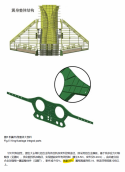Is there an estimate for the empty weight of J-35? Considering that the J-35 is a twin engine aircraft, it'd be surprising if the J-35 is significantly lighter than the F-35C.
Sure, here's my personal estimate on the empty weight of J-35.
FC-31 was advertised as having MTOW of 25 tons. Later, possibly with better engines, that got changed to 28 tons.
MiG-29 had empty weight of 11 tons and MTOW of 18 tons.
MiG-29M and MiG-35, the redesigns with more powerful engines and new internal structure had empty weight of anywhere from 11 to 13 tons and MTOW of 24.5 to 26.5 tons. Exact values are not clear and are not properly sourced.
F-35A has empty weight of 13.1 tons and mtow of 32 tons
F-35C has empty weight of 15.7 tons and mtow of 32 tons.
Rafale C has empty weight of 9.9 tons and mtow of 24.5 tons
Rafale M has empty weight of 10.6 tons and mtow of 24.5 tons
Using all those values to extrapolate a weight estimate, and given that J-35 is a larger and heavier plane than FC-31 due to its role,
I'd estimate J-35 to have an empty weight anywhere from 12 to 15 tons.
With closer to 12 rather than 15 if its design is not meant to haul a lot of heavy weapons around and if it's not designed to last for more than 6000 hours or so.
Since I do believe that to be likely, then I can further narrow the weight estimate down to 12 to 14 tons empty. MTOW is unknown but I see no reason for it to be below 28 tons, given it's launched by catapult. Operationally, of course, it's almost never gonna reach 25 tons, if that.


